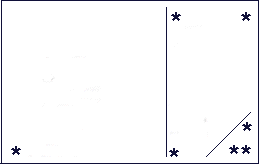

Telecom Eireann first introduced Callcards way back in 1988 and in doing so conducted three major trials around Ireland. These trials consisted of the introduction of a different type of Callcard being introduced by three main manufacturers, namely GPT Plessey, Autelca, Landis & Gyr and were set in the cities of Dublin, Limerick and Galway and surrounding areas respectively.
The first trial began in April 1988 in the capital city of Dublin. The trial showed remarkable interest which led to Telecom Eireann hosting the two other trials. In February 1989 the Autelca trial began in Limerick and thirty-one Callcard phones were installed around various parts of the city. The units printed were of 5,10,20,50,100 unit denotations and all had the same design. However two pictorial cards of 20,50 units respectively were issued for the I.M.I conference which was sponsored by Telecom Eireann. The pair of cards were given to delegates of the fair but unfortunately most of the cards were simply discarded after their use and so these cards are now fetching in the area of £2,500+.
In November 1989 the third trial began in the western city of Galway. Nine Landis & Gyr card phones were installed in various parts of the city. Unlike the previous two trials however the Galway trial only lasted a very short period and hence only a small quantity of cards have ever been fully used. This has caused a huge amount of coverage as many people believe that these used cards are worth more as they are quite rare. I haven't seen this to be the case so I would advise caution on this matter if it should arise. The cards are of similar fashion to the old magnetic stripe cards of Britain and Belgium but could only be used within Galway.
Despite the three trials Telecom Eireann chose a different method all together. They adopted the Smart Chip design similar to that of France. Although the cards are far more expensive to produce they are a far more secure form of pre-payment to that of phone calls. I have heard of cases in which former Limerick trial cards been placed in freezers and nail varnish being painted on the card so as to attempt to adhere the deduction in units as calls were made.
Smart-Chip Card phones were first introduced to Ireland in 1990 and the first Smart-Chip Callcard was produced for the I.M.I. conference which once more was sponsored by Telecom Eireann and 2,000 cards were produced in an attractive brochure to mark the event. This was certainly an indication on what was to come as the card was produced with either the SI4 chip or the SI5 chipset.
The Irish Collector has over the years become fascinated by the amount of variations that have appeared on a card be it be
1) A different chipset. being used.
2) Different address
3) Different batch or control number
4)Different locations of the Innovation Logos to which I shall explain in more detail.
Most Irish Callcards have a printed or engraved innovation logo on the card. Most Callcards have their logo on the back of the card but some cards however such as test cards, have been known to have their logo on the front of the card. the reason behind this is that the logo is put on the cards as a patent of Roland Morano - the inventor of the smart card. the logos are often referred to as flags. There are many different forms (types), of flags and some can only been seen on very close inspection of the card. The best way of locating a flag on a card especially earlier releases is to tilt the card through a 45 degree angle. Logos (flags), are found on various positions on the card and these positions are indicated by a * symbol here for reference purposes. Any logos that you may come across in unusual locations should be cross checked against another card of the same type.

Other Variation's that can be found on Irish cards.
To date Irish Cards have contained a number of different address's
on the back of the card. This was due to the fact that the Distribution division of
Callcards has moved around a number of times. A number of early card's have appeared with
the first four addresses and this street name can determine the value of the card quite
substantially.
The Street Names include :
College Green
Marlbourough Street,
St Stephen's Green,
Dame Lane,
Cathal Brugha Street.
Nowadays however there is no street name displayed on the back of Irish Callcards.
Copyright 1997,1998 Steven Hanley.